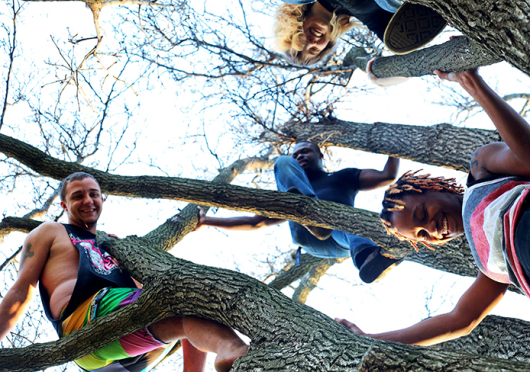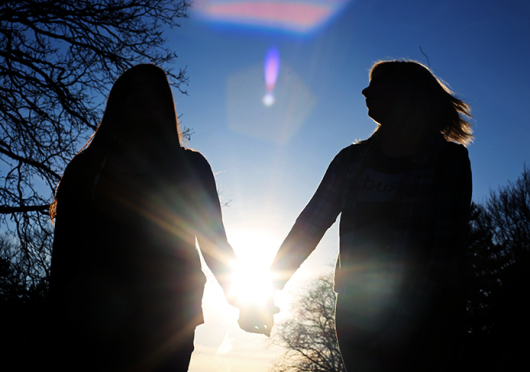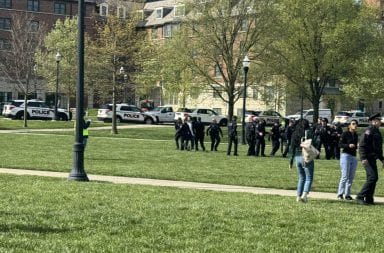Adrienne Michelson, a second-year in political science, is an active member of Undergraduate Student Government, co-president of the LGBTQ student organization Pride OSU, and a proud member of Ohio State’s LGBTQIA community as an openly lesbian woman.
Michelson and many other students like her who identify as part of the LGBTQIA community, which includes intersexual and asexual persons, had a chance to make their voices heard in a newly released research report by the Multicultural Center.
The research report, “Exploring Wellbeing to Support Success of LGBTQ and Questioning Students at The Ohio State University,” was conducted by authors Tamara Davis, Susan Saltzburg, Angie Wellman and Tayo Clyburn.
It took nearly two years to complete and examine what resources are needed for LGBTQIA students to have a successful college experience, said Davis, the report’s lead author and an associate professor in the College of Social Work.
Additionally, it studied how the university can ensure academic achievement and positive well-being for LGBTQIA students.
The report collected data from more than 700 students and used a methodology called concept mapping, which allowed researchers to “blend online and face-to-face processes in ways that students could be true to themselves without fear,” Davis said.
“We asked students to tell us how Ohio State can best support their well-being for a successful college experience,” she said.

Tyler Richendollar (left), a first-year in nursing, Daija Rayford (right bottom), a second-year in food science, Ethin Lanier (center), a fourth-year in paramedics, and Rachel Cagle, a third-year in English, climb a tree on the oval. Richendollar and Rayford identified as gay. The 4 of them work together at Raising Cane’s on North High Street. Credit: Jon McAllister / Asst. photo editor
Michelson said she appreciated the emphasis on students’ opinions and experiences because, as a student and member of the LGBTQIA community, she can personally relate to campus issues such as gender neutral bathrooms.
“I thought a lot of the claims the report makes about what needs to be done next are very relevant and are really important things, specifically when it comes to gender-inclusive housing, gender-neutral bathrooms, especially with satellite campuses, and the lack of safety and security of LGBTQIA students on those campuses,” she said.
The effects of the research might already be having an effect, as OSU has recently began offering new resources for LGBTQIA students.
OSU students can now register in a student database whether they consider themselves part of the LGBTQ community, according to the university registrar website. The information, for internal purposes only, will track academic progress and retention rates of LGBTQ students, the website said.
Michelson said she has a few questions about the new resources.
“When they say ‘database,’ what kind of database are they using?” she said. “I’m (also) worried about the lack of (intersex and asexual people) being represented when they say ‘LGBTQ.’”
Although Michelson said she has questions, she does think that it’s a good thing for the LGBTQIA community at OSU.
“I think that is a good step forward in trying to include data from those communities in terms of trying to help benefit them,” she said.
Davis and fellow author Saltzburg said they chose to be part of the research project for personal reasons, as they both are members of the LGBTQIA community.
“As a member of the LGBTQ community, I have been working with and on behalf of LGBTQ youth and young adults for the better part of 30 years as a social activist, family therapist, mentor and scholar,” Saltzburg said. “This study provided us with the unique opportunity to address the needs of the LGBTQ community of students on the OSU campuses and honor their voices.”
Davis said she had discussed the university’s lack of research regarding the LGBTQIA community with Wellman, who serves as an intercultural specialist in the Multicultural Center and liaison to the LGBTQIA community.
“Angie indicated she had no data to inform or support her work at OSU because at the time, Ohio State had no formal processes in place to gather data about its LGBTQ students like it did for other diverse groups at the university,” Davis said.
Saltzburg said giving LGBTQIA students a voice was the most gratifying part of the research because she thinks student voice is the most effective form of change, not only for LGBTQIA students at OSU, but at college campuses around the country.
“Including the students’ voices as the driving force for raising awareness, and creating change and knowing the dedicated work put into this study will serve as a landmark initiative for Ohio State University as well as other institutions of higher education around the country,” she said.
Saltzburg and Davis said they both hope to do similar research in the future that helps LGBTQIA students at higher-learning institutions.
“I think both Dr. Davis and I would like to see this study serve as a springboard to other projects pertaining to LGBTQ students,” Saltzburg said.
Michelson said the research is a good first step for LGBTQIA acceptance and it is starting to initiate change.
“I feel like there are two sides of this coin where we as a community have to come together and bond and feel safe and feel brave in the space that we are given, because a lot of people in society still discriminate against us,” she said. “It’s not just about bonding as a community. It’s about using the data that the (Multicultural Center) provided and letting people know as a member of society we need to be treated equally. We are just as human as everyone else, and we need a safe environment that needs to be upheld and made possible.”



